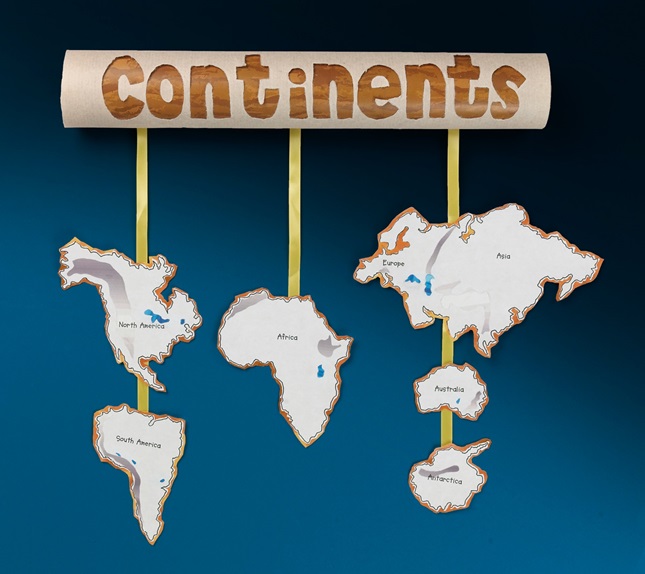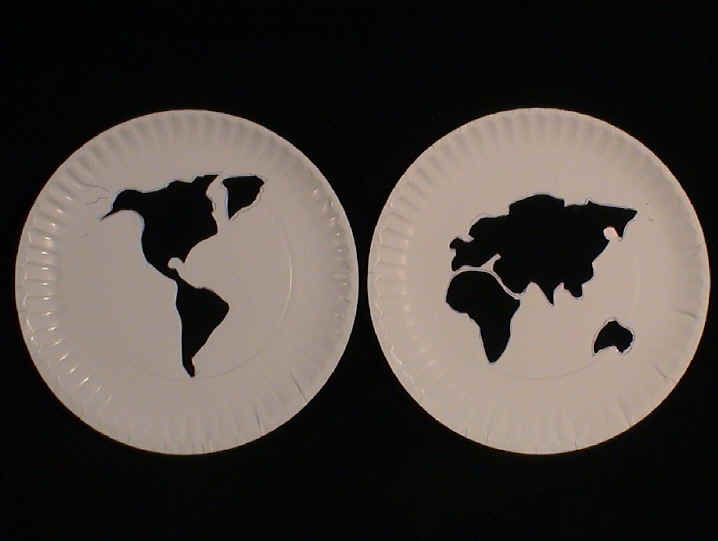History
Tell me about Charlemagne.In 800 AD, during the medieval period, Pope Leo III crowned Charlemagne Holy Roman Emperor of Europe.
In class: Add a sticker to your crown each time you say the memory sentence. Parents are responsible for making sure their child says the sentence and handing them a sticker.
At home: Finish coloring your crown and practice your cutting skills.
Extended Study:
Pope Leo III was the Pope of the Catholic Church from 795 to his death in 816. Protected by Charlemagne from his enemies in Rome, he subsequently strengthened Charlemagne's position by crowning him Holy Roman Emperor.
Charlemagne (/ˈʃɑrlɨmeɪn/; 2 April 742 – 28 January 814), also known as Charles the Great (German: Karl der Große;[1] Latin: Carolus or Karolus Magnus) or Charles I, was the King of the Franks from 768, the King of Italy from 774, the first Holy Roman Emperor, and the first emperor in western Europe since the collapse of the Western Roman Empire three centuries earlier.
The oldest son of Pepin the Short and Bertrada of Laon, Charlemagne became king in 768 following the death of his father. He was initially co-ruler with his brother Carloman I. Carloman's sudden death in 771 under unexplained circumstances left Charlemagne as the undisputed ruler of the Frankish Kingdom. Charlemagne continued his father's policy towards the papacy and became its protector, removing the Lombards from power in Italy, and leading an incursion into Muslim Spain. He also campaigned against the peoples to his east, Christianizing them upon penalty of death, at times leading to events such as the Massacre of Verden. Charlemagne reached the height of his power in 800 when he was crowned as "Emperor" by Pope Leo III on Christmas Day at Old St. Peter's Basilica.
Called the "Father of Europe" (pater Europae),[2] Charlemagne's empire united most of Western Europe for the first time since the Roman Empire. His rule spurred the Carolingian Renaissance, a period of cultural and intellectual activity within the Catholic Church. Both the French and German monarchies considered their kingdoms to be descendants of Charlemagne's empire.
Charlemagne died in 814 after having ruled as Emperor for just over thirteen years. He was laid to rest in his imperial capital of Aachen in today's Germany. His son Louis the Pious succeeded him as Emperor.
Recommended Reading:
A holiday! Gisela sat dreaming of her special costume. She could hardly wait for the great procession to begin in the village. All Hallows Day was a great holy day and Gisela was ready for a feast!
Gisela's Holiday Story is part two of the Medieval Maidens series following Gisela, the daughter of Charlemagne, king of the Franks. The series was created to teach young readers about medieval history. In Gisela's Holiday Story, readers learn about All Saints Day and where out modern day Halloween traditions come from. A beginning level chapter book appropriate for readers ages 7 and older. Winner of Creative Child Magazine's 2010 "Book of the Year"
The year is A.D. 781. King Charles of the Franks is crossing the Alps with his family and court on a journey to meet with Pope Hadrian. One frosty night he speaks to his young son Carl: When we come to Rome you will know that I am naming you my heir. One day you will rule over all my lands. . . . But the King already had an heir, Pepin the Hunchback, mockingly called Gobbo. Was he to be dispossessed? Yet Carl sees that Charlemagne is determined to do what he feels is best to serve God and Europe.
Geography
In class: Point to each continent and Ocean on the map as we sing the song
Parents - Help your child find locations on the map quickly
Review - Geography Jump. We will take turns jumping to each continent on our oversized floor map.
At Home: Practice what we did at in class and make your own Continent Mobile
Follow the instructions on the link to make your own continent mobile. The link provides more extended study as well as subjects and standards covered. You can copy that information down for your records!
Extended Study: I found this exciting hemisphere/plate techtonic study you can do by tracing the continents onto paper plates. We will do this for my older daughter, but I think everyone will enjoy it!
I also found this fun lap book another homeschool family made.
https://workspaces.acrobat.com/?d=cKbPEGh9McwIzKGnNYhOAA
Books: The song we used in class comes from this book
English
In class: We are going to rap and pat the macrobeat for the first row and the microbeat for the second. If we get really crazy the kids can come up with their different body percussion for the beats. Might be a simple add on for review!
At home: Come up with different body percussion. Staying on the macro and microbeats while saying the parts of speech is a basic music competence skill. See if you can extend that skill to keeping the beat in your feet and with a friend.
Extended study:
Google Montessori Grammar Cards. The Montessori correlates a shape with each part of speech. It looks like a very interesting way to introduce the parts of speech to young children. I teach music for a local Montessori preschool and love the approach.
Parts of speech matching cards
Match the word to the part of speech with Easter eggs.
materials: paper plates (3 for each child)
Write a noun, verb, or adjective on each paper plate. Lay the plates out in an open space outside. Play music and kids dance from plate to plate. When the music stops, the child picks up the plate and keeps it. The goal is to collect one noun, verb, and adjective plate. If the child lands on a noun when the music stops, and he already has a noun, he doesn't keep the plate. Once everyone has each part of speech, they use their creativity and imagination to create a unique sentence using the words they collected on their plates!
Write down different words for each part of speech on bright colored paper fish. Then, flip the fish over so the word isn't visible. Mix them up in a pile. Kids have to catch eight fish. They have to find words that represent each part of speech. For younger kids, you could simply do nouns, verbs, and adjectives. After they have found each part of speech, they use their words to write a sentence or two.
(For our young class I think I will color code the fish using the Montessori Grammar code colors.)
Note: Mix up the colors. For example, don't write all the verbs on green. Otherwise, the game will be too simple and kids will look for colors instead of recognizing the parts of speech.
How to: Cover your paper fish in contact paper. You can find the above fish template here. Next, attach a magnet to the fish on the same side as the word. You can buy magnet strip rolls at Staples. Find a stick outside, attach a long piece of string, and add a round magnet around the end of the string. Now, go fish!
Parts of speech secret agent sheet. I will use this with my first grader this year. Click on the link to get the full worksheet. A fun, easy way hunt for parts of speech!
Science
I am going to print off the presentation above, laminate and cut it into three sections. Then the kids can match the map ant the animal to the biome.
We will also color the biome's on a map. It's a good way to integrate what we are learning in geography.
Here is a link to another map idea. It's a pin map. You pin the picture to the already color coded map.
Extended Study:
Create a diorama of your favorite biome
Books:
Latin
Timeline
Last year we focused on Mesopotamia and Sumer, Egyptians, and Indus River Valley Civilization in our house for this first week.
We looked at Mesopotamia on the map and talked about the importance of the river and the water. We discussed why being between two rivers would have been a good place for early people to live. We created our own "irrigation" by using some long pvc pipes and pvc elbows to reroute water.
To study Egypt we built a pyramid out of sugar cubes and spelled our names using hieroglyphics. We also read Magic Treehouse book #3, Mummies in the Morning, and it's accompanying fact finder book.

This year we will read about, and discuss, the Creation and Fall and the Tower of Babel.
Scripture Reference:
Genesis 11:1-9
The Tower of Babel - Story Summary:
Up until this point in the Bible, the whole world had one language - one common speech for all people. The people of the earth became skilled in construction and decided to build a city with a tower that would reach to heaven. By building the tower they wanted to make a name for themselves and also prevent their city from being scattered.
God came to see their city and the tower they were building. He perceived their intentions, and in His infinite wisdom, He knew this "stairway to heaven" would only lead the people away from God. He noted the powerful force within their unity of purpose. As a result, God confused their language, causing them to speak different languages so they would not understand each other. By doing this, God thwarted their plans. He also scattered the people of the city all over the face of the earth.
Points of Interest from the Story:
• When God speaks in this story, He uses the phrase, "let us go," referencing the trinity.
• Some scholars believe that this marks the point in history where God divided the earth into separate continents.
• Some scholars believe that this marks the point in history where God divided the earth into separate continents.
• God says in Genesis 11:6, "If as one people speaking the same language they have begun to do this, then nothing they plan to do will be impossible for them." (NIV) God realizes that when people are unified in purpose they can accomplish impossible feats, both noble and ignoble. This is why unity in the body of Christ is so important.
• To build, the people used brick instead of stone and tar instead of mortar. They used "man-made" materials, instead of more durable "God-made" materials. The people were building a monument to themselves, to call attention to their own abilities and achievements, instead of giving glory to God.
Question for Reflection:
Are there any "towers" you are building in your life?






















No comments:
Post a Comment